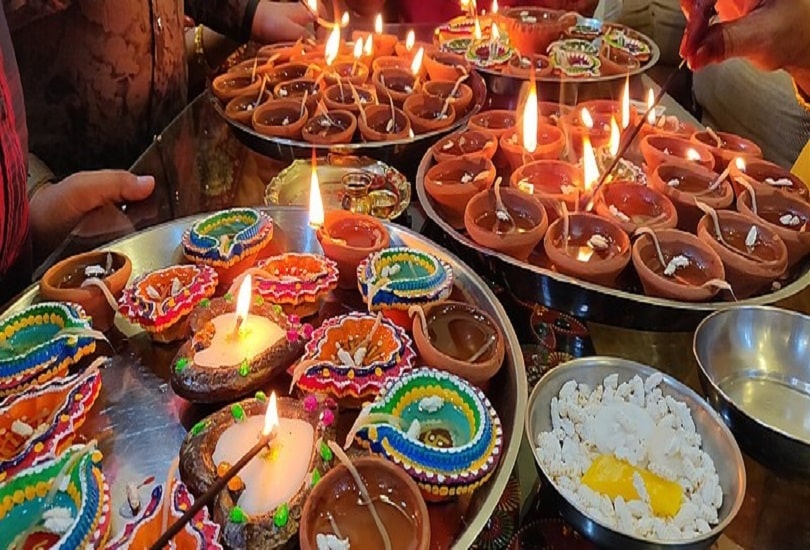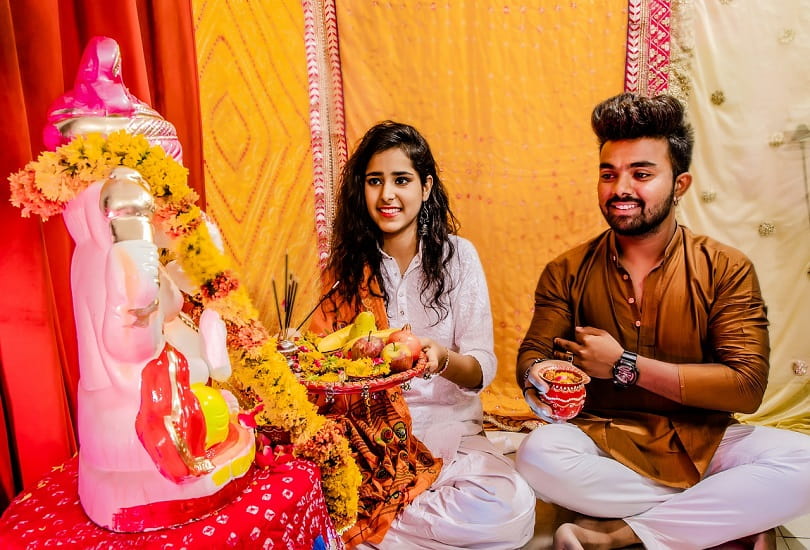Diwali Celebration: A Comprehensive Guide On How India Celebrates Festival of Lights
Diwali or the Festival of Lights is the biggest and most important festival in India which is celebrated to mark the victory over evil on the darkest night of the year, on Amavasya- no moon night. With the fluorescent fairy lights, earthen oil lamps, festive time with friends, family, and foes as well, and so many delicious sweets and food to eat, the festival is celebrated with great grandeur and revere among Hindus, Jains, and Sikhs all around the world between the end of October and November.
Also called Deepavali, Diwali is derived from Sanskrit translating row of lights, is the best time to dig deeper into the heritage culture and beliefs of India. People on the day of the Diwali celebration put on their newest and finest traditional wear, decorate their homes with flowers and garlands, draw colorful rangolis on the floor, and prepare gifts and sweets for their friends, family, and neighbors. It is a time to celebrate the legendary folklore with everyone regardless of caste or religion and let go of all past grudges and make merry.
Table of Contents
Significance of Diwali Festival in India:

In North India, Diwali is celebrated to mark the homecoming of Lord Ram along with his wife Sita, and brother Lakshman after 14 years of exile and defeating Ravana with his utter devotee Hanuman. The people of Ayodhya first lit the earthen oil diyas to welcome their King, Ram, and Lady Sita.
Diwali celebration marks the victory of Goddess Parvati in the form of Goddess Kali over a demon Bakasura in West Bengal. In the southern regions of India like Tamil Nadu, Diwali is celebrated as the defeat of the demon Narkasura by Lord Krishna and the arrival of King Bali. As for Jainism, Diwali is a special day marking the anniversary of Nirvana or the final release of Mahavira’s soul, the last Jain Tirthankara.
Many people, according to Vedic legend, revere the marriage of Lord Vishnu and Goddess Lakshmi on Diwali and praise Lord Ganesha, the God of Wisdom and prosperity.
Marking the arrival of winters, the Diwali festival is the beginning of a Hindu new year and commemorates triumph over evil and victory of light over darkness. The festival holds many beliefs and mythological lore of Hindu Gods and Goddesses.
Diwali Celebration In Different Parts of India
The Festival of Lights emphasizes good over evil, light over darkness, love over despair, and in some colorful, spiritual, and delicious ways.
Diwali in North India:

In the states of North India- Himachal Pradesh, Uttarakhand, Srinagar, Delhi, and Punjab, the Diwali festival is celebrated with beautifully decorated homes with fairy lights and flowers. Families sit together and start the celebration by worshiping Lord Ganesha and Goddess Lakshmi to seek blessings of health and wealth. Friends and family gather together and enjoy the firework shows, Diwali Mela, and lit-up colonies after traditional scrumptious food and homemade sweets. Uttar Pradesh and Rajasthan are the best places to visit for the Diwali celebration in North India.
Diwali in West India:

Colorful rangolis and oil diyas are the important elements in Diwali preparation and hence make the western part of India the best place to visit on Diwali this year. Gujaratis draw Goddess Laksmi’s footprints in front of their doors and prayers and celebration begin with Vaag Baras followed by Dhanteras, Kali Chaudas, Deepawali, Bestu Varas, and Bhai Bij. Diwali celebration goes on for 5 days in Maharashtra and starts with the Vasu Baras ritual to honor a holy cow and her calf. A traditional Maharashtrian feast known as Faral is organized by families and friends that includes famous sweets like Chakli, Karanji, and ladoo.
Diwali in East India:

Diwali Festival is celebrated to reminisce the revered deities in various forms in East India. Locals of West Bengal and Assam worship Maa Kali, Goddess of destruction. In Odisha, people pray for departed souls and their ancestors by lighting oil lamps and diyas in their remembrance and guiding them on to journey. In Bihar, devotees partake in a day-long fast and light 21 oil days in their home’s temple on Choti Diwali, a day before the Diwali celebration, and bathe in Ganga the next day.
Diwali in South India:

Also known as Narak Chaturdashi in many South Indian regions, Diwali is celebrated in the Tamil month of Aippasi or Thula, and worship Lord Krishna and his immense knowledge and power. In Karnataka, locals bathe in oil on Ashwija Krishna Chaturdashi and sing the lore of King Bali and make cow dung forts on Bali Padyami. Tamilians commence this auspicious day by also bathing in oil and consuming a prasad called Diwali Lehiyam before serving the meal. In Andhra Pradesh, locals pray to Lord Krishna and his wife Satyambha’s triumph over Narakasura and thereafter begin the grandeur of firecrackers and gifts exchange.
Fun and Delights of Diwali in India:

Lights, flowers, colors, fireworks, traditional cuisine, and delicious sweets add more delights to preparing and celebrating Diwali with your friends and families. This 4 to 5 days long festival brings prosperity and much love among people in their different styles.
Light- Watch the entire country lighten up with fairy lights and earthen diyas and oil lamps from tip to toe. People visit the temples and attend grand Diwali fairs and shop and eat at local stalls.
Prayer– There is the various significance of Diwali in different parts of India, which narrates the mythological legends and Gods and Goddesses. Praying and welcoming Goddess Lakshmi and Lord Ganesha for wealth and well-being commences the Diwali festival celebration regardless of the state.
Food– The traditional cuisine and sweets add more taste and festive aroma to people. Taste the sweet Gulab Jamun in North India and Anarsa in Maharashtra, and the spicy flavors of Gujarati snack Cholafali and Ukkarai and Murukku in South India.
Gifts– Diwali conveys love and celebration among all communities and religions and gives the strength to let go of grudges and make merry in the form of gifting sweets and homeware, decor items, and more to family, friends, and neighbors.
Fireworks– This is the most-loved part of the Diwali Festival, especially among kids. After dinner, everyone gathers together outside and cracks the brightest firecrackers in the sky. The burnt smell of crackers and the aroma of sweets are surely festive.
Safety Tips For Celebrating Diwali
Diwali is the brightest and loudest festival in India with crackers and lights and sweets. We often stumble upon the news of people getting hurt while burning a candle or a fire-cracker. So, here are some useful tips for you to celebrate this Diwali safely and grandly with your loved ones.
- Wear cotton fabric clothes to avoid catching fire. Do not be tempted with synthetic fabrics.
- Keep the first-aid kit and a fire extinguisher handy, just in case.
- Don’t burn crackers in closed and crowded areas.
- Must not be tempted to burn a cracker or a rocket holding in your hands.
- Don’t let your kids burn crackers without a guardian’s supervision.
From getting nicely dressed up and dusting and decorating homes to offering prayers and preparing delicious sweets, Diwali brings so much to celebrate with everyone and learn the Indian traditional values and famous folklore that has been shaping India all these centuries. Plan your festival vacations with Safar Mentor and visit the best place in India to celebrate Diwali this year in a truly unforgettable way.


